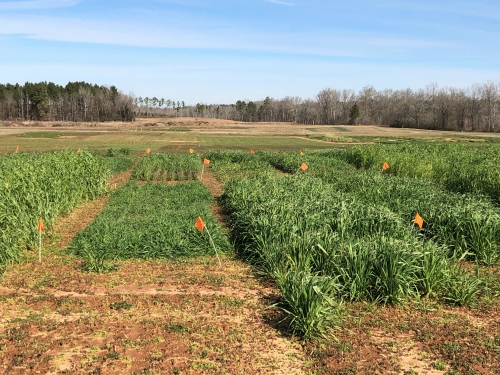When Should I Terminate My Cover Crop?
 There are many interrelated things to consider when deciding when to terminate your cover crop. The first consideration is when you expect to plant your cash crop. The second consideration is how wet the soil is and whether you can plant the field without creating a mess. These two considerations can influence cover crop termination timing more than any other considerations.
There are many interrelated things to consider when deciding when to terminate your cover crop. The first consideration is when you expect to plant your cash crop. The second consideration is how wet the soil is and whether you can plant the field without creating a mess. These two considerations can influence cover crop termination timing more than any other considerations.
How much biomass the cover crop has produced is also an important consideration. In general, you obtain the most benefit from the cover crop with maximum biomass. However, these benefits need to be balanced with potential difficulties from planting into large amounts of residue. If you do not have the experience or equipment to obtain a good cash crop stand, you may want to start with a lower amount of cover crop residue. You should recognize the lower amounts of residue may decrease the desired benefits provided by the cover crop.
The maximum cover crop biomass typically occurs when the cover crop is entering its reproductive stage. In late March to May, biomass of winter cover crops like cereal rye and crimson clover can double in two to four weeks. There may be circumstances when it is worth delaying planting of the cash crop to take advantage of this burst of cover crop growth. This is particularly true if your goals include maximizing weed suppression with cover crop residue left on the soil surface or reducing nitrogen requirements through nitrogen fixation by legumes in the following cash crop. Research shows you need 8,000-10,000 lbs/ac of cover crop biomass for effective weed suppression. That level of biomass production will not be detrimental for planting cash crops if the right equipment is used. However, you should be aware that high levels of biomass can lead to an initial nitrogen immobilization. An additional 20 to 30 lbs N/ac before planting may be necessary for cotton or corn.
Maximizing biomass is also important for maximizing nitrogen. Legumes tend to fix nitrogen most rapidly just before bloom, and because the amount of available nitrogen provided by a legume cover crop is a product of the amount of biomass and the nitrogen concentration, maximizing biomass also will maximize the potential nitrogen that may be available.
No-till producers can choose to plant into green cover crops and terminate while planting, or you can terminate the cover crop and plant at least three weeks later. Planting into green cover crops can help maximize biomass and help with weed suppression. In wet springs, an actively growing cover crop may help dry the soil out and allow planting sooner. However, planting into green cover crops may increase insect pressure on your cash crop, and in dryland fields there can be competition for soil moisture between the cash crop and the dying cover crop. Leaving a three to four week window between termination and planting provides an opportunity for rain to recharge subsoil moisture and reduces the risk of insect pests, seedling-borne diseases, nutrient immobilization, and allelopathy from the cover crops.
It is important to ensure that the cover crop is green and actively growing OR that the cover crop is completely dead and brittle when dry when planning to plant. Cover crop residue that is partially green and breaking down from termination goes through stages that makes residue tough and it is difficult to plant cash crops. During this time cover crop residue will commonly wrap around equipment and hair pin resulting in poor cash crop stands.
Organic producers need to pay careful attention to when the cover crop is in reproductive stage to ensure the cover crop can be killed before planting. In general, small grain cover crops should be past flowering and in the milk to dough stage. Legumes should be at 2/3 bloom before termination.
Tips to Maximize Cover Crop Biomass
• Maintain soil fertility and pH
• Plant good quality seed
• Establish a good stand
• Inoculate legumes
• Plant early
• Terminate late
More Information:
- A Simple Guide for Conservation Systems in the Southeast. USDA ARS
- Termination of Cover Crops: Management Considerations for the Subsequent Cash Crop. Conservation Systems Fact Sheet No. 11. USDA ARS
- North Carolina Organic Grain Production Guide
Contributors:
Dr. Kip Balkcom, USDA ARS National Soils Dynamic Laboratory; Julia Gaskin, Extension specialist, University of Georgia; Nathan Lowder, NRCS Soil Health Specialist; Dr. Dara Park, Assoc. Professor, Clemson University
